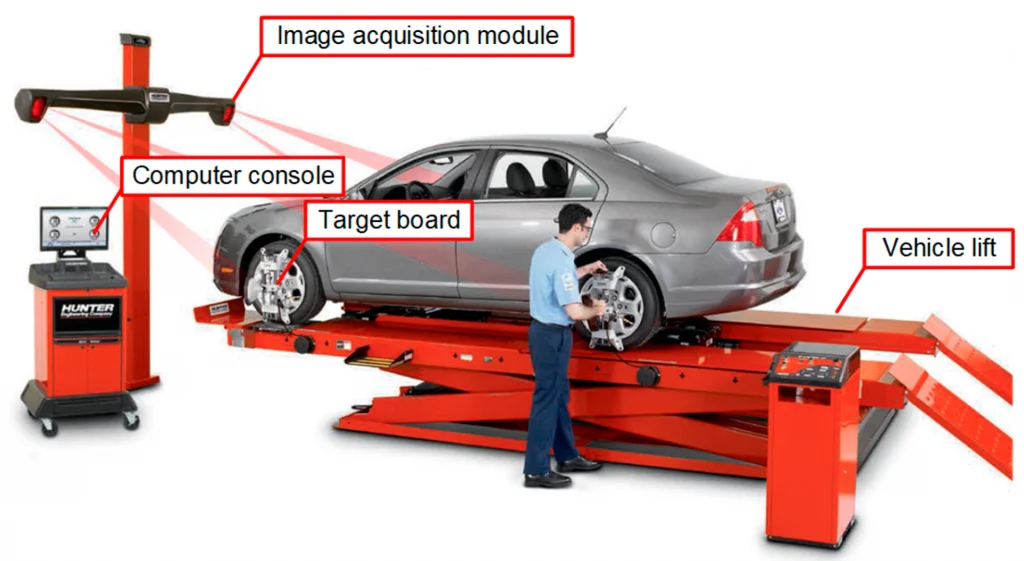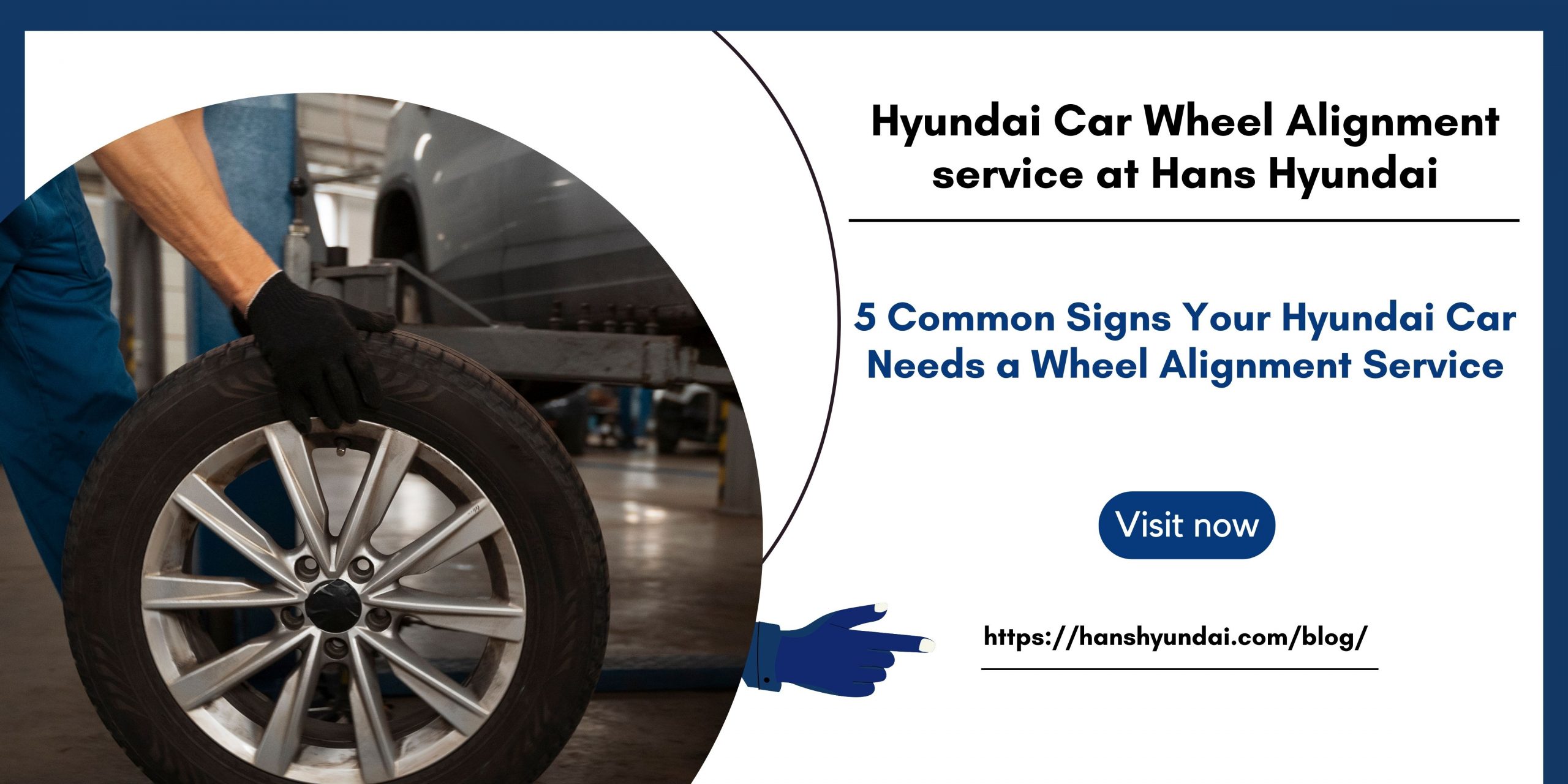Hyundai cars are known for their reliability and functionality. However, it is important to ensure they receive regular maintenance to keep them running smoothly. Regular Hyundai car service is crucial for its optimal performance, safety, and longevity.
Wheel alignment service is an essential aspect of car maintenance that ensures proper tire wear and handling. Regular checks and adjustments extend the lifespan of tires and also contribute to a smoother and safer driving experience. Professional wheel alignment plays a crucial role in maintaining the vehicle’s optimal handling and performance.
Hans Hyundai car service center in Delhi provides top-notch car maintenance and repair services for Hyundai cars. Their team of experienced technicians is trained to handle various repairs and maintenance tasks, ensuring that your car is in good hands.
Find below the top five signs that indicate your Hyundai car needs a wheel alignment service.

When Does Your Hyundai Car Need Wheel Alignment Service?
Proper wheel alignment is crucial for maintaining the performance, safety, and longevity of your Hyundai car. Over time, factors like road conditions, driving habits, and general wear and tear can lead to misalignment, affecting your vehicle’s performance.
Find below the five common signs that indicate your Hyundai car might need a wheel alignment service.
Uneven or Rapid Tire Wear
Uneven or rapid tire wear on your Hyundai car can be a sign of misaligned wheels. If left unchecked, can lead to premature tire wear, reduced fuel efficiency, and an uncomfortable driving experience.
Regular wheel alignment can help prevent these issues and ensure your tires last longer. Regular inspections can help to detect any misalignment issues and provide the necessary adjustments to get your car back on track.
Don’t let uneven tire wear ruin your driving experience; get your Hyundai’s wheel alignment checked today.
Off-Center Steering Wheel
An off-center steering wheel is a common sign of wheel alignment issues in Hyundai cars. When the wheels are not properly aligned, the steering wheel may pull to one side, making it difficult to drive straight. This can also lead to uneven tire wear and strain on the car’s suspension system.
Regular wheel alignment service is important for maintaining the safety and performance of your Hyundai. If you notice an off-center steering wheel, it’s time to have your car’s wheel alignment checked by a professional. The service can help improve your car’s handling and fuel efficiency, preventing more costly repairs down the line.
Car Pulls to One Side
If your Hyundai car pulls to one side while driving, it could be a sign of misaligned wheels. Regular wheel alignment service is crucial for the safety and handling of your vehicle. When the wheels are properly aligned, the tires make contact with the road at the correct angles, reducing the risk of uneven tire wear and improving stability on the road.
Squealing Tires
Squealing tires are a common sign of misaligned wheels, which can put extra stress on the tires and cause them to wear out more quickly. If you’re hearing a squealing sound when you turn, it could be a sign that your Hyundai’s wheels are misaligned. Regular wheel alignment can help prevent this problem and ensure that your tires last as long as possible.
By staying on top of wheel alignment service, you can save yourself the hassle and expense of dealing with more extensive repairs further down the line.
Vibrating Steering Wheel
A vibrating steering wheel can be a sign of misaligned wheels. This uneven tire rotation can lead to a rougher ride and cause unnecessary strain on your car’s suspension system. Ignoring these signs can lead to more significant problems down the line, including expensive repairs and a greater risk of accidents. Don’t wait for these symptoms to worsen; get a professional wheel alignment service for your Hyundai to ensure a smoother and safer driving experience.
Regular Hyundai car service, including wheel alignment, can prevent these issues and maintain your Hyundai’s overall performance.
Having your wheels properly aligned is crucial for ensuring your safety, extending the life of your tires, and maintaining the optimal performance of your car. However, Addressing alignment issues promptly ensures a smoother and safer driving experience and also contributes to the overall health and longevity of your vehicle.
Avail of professional wheel alignment service at Hans Hyundai Service Center in Delhi.
Get Professional Hyundai Car service at Hans Hyundai Service Center
Hans Hyundai car service center is a go-to destination for top-quality car maintenance and repairs. With a team of experienced technicians and state-of-the-art facilities, customers can trust that their Hyundai vehicles will receive exceptional care. Hans Hyundai offers a comprehensive range of services to ensure your Hyundai runs smoothly and safely.
Book wheel alignment service for your Hyundai car at Hans Hyundai service center in Delhi to enjoy a smooth, safe, and comfortable ride!
Wheel alignment is the adjustment of a vehicle’s wheel angles to manufacturer specifications. It ensures optimal tire performance, even tread wear, improved fuel efficiency, and proper vehicle handling. Regular alignment is crucial for safety, extending tire lifespan, and overall driving comfort.
It’s recommended to have a wheel alignment service at least once a year or if you observe signs of misalignment, like uneven tire wear, steering issues, or vehicle pulling.
A wheel alignment service typically takes about 30 minutes to an hour. The duration may vary based on the complexity of adjustments needed.
Yes, wheel alignment can enhance fuel efficiency by reducing rolling resistance, optimizing tire contact, and improving overall vehicle performance.


